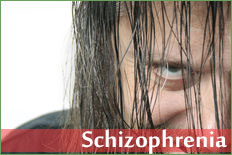Health Centers > Mental Health Center > Dementia
Alzheimer Disease and Other Dementias
In a world of ever-growing cognitive complexity, the threat of Alzheimer disease and other cognitive impairments that seem an inevitable part of aging is, on one hand, frightening, and on the other, a call to arms. We are faced with an increasing number of persons with dementia around the world, both in absolute numbers and in percentage of the population. This rise is in part due to greater survival of the normally aging world population and persons with chronic illnesses, head injuries, and other factors affecting brain function. As you will read on our site, our awareness of dementia has a long history with wide and varied attribution from immorality to evil. From these primitive beginnings, the community of clinicians and scientists has moved to an age of reasoning and inquiry that has created a nosology and diagnostic criteria, developed a knowledge of accompanying pathology, designed trials to test treatments, evaluated psychosocial interventions, provided support to caregivers, and championed the work to preserve the quality of life of those who are afflicted. There has been a virtual explosion of knowledge concerning the dementias in the past 30 years, and scarcely a day goes by that the media fail to mention the possibility of a new treatment for Alzheimer disease.
Introduction to the Dementias
Overview of Dementia
Dementia refers to a loss of cognitive function (cognition) due to changes in the brain caused by disease or trauma. The changes may occur gradually or quickly; and how they occur may determine whether dementia is reversible or irreversible.
Cognition is the act or process of thinking, perceiving, and learning. Cognitive functions that may be affected by dementia include the following:
- Decision making, judgment
- Memory
- Spatial orientation
- Thinking, reasoning
- Verbal communication
Dementia also may result in behavioral and personality changes, depending on the area(s) of the brain affected.
Types of Dementia
Some dementia is reversible and can be cured partially or completely with treatment. The degree of reversibility often depends on how quickly the underlying cause is treated.
Irreversible dementia is caused by an incurable condition (e.g., Alzheimer's disease). Patients with irreversible dementia are eventually unable to care for themselves and may require round-the-clock care.
Incidence and Prevalence of Dementia
An estimated 2 million people in the United States suffer from severe dementia and another 1 to 5 million people experience mild to moderate dementia. Five to eight percent of people over the age of 65 have some form of dementia and the number doubles every 5 years over age 65.
The prevalence of dementia has increased over the past few decades, either because of greater awareness and more accurate diagnosis, or because increased longevity has created a larger population of elderly, which is the age group most commonly affected. In September 2009, it was estimated that as many as 35 million people throughout the world have some type of dementia.
Schizophrenia
A common and serious mental disorder characterized by loss of contact with reality (psychosis), hallucinations (false perceptions), delusions (false beliefs), abnormal thinking
Alzheimer's is the most common form of dementia, a general term for memory loss and other intellectual abilities serious enough to interfere with daily life. Alzheimer's disease accounts for 60 to 80 percent of dementia cases.
Alzheimer's is not a normal part of aging, although the greatest known risk factor is increasing age, and the majority of people with Alzheimer's are 65 and older. But Alzheimer's is not just a disease of old age. Up to 5 percent of people with the disease have early onset Alzheimer's (also known as younger-onset), which often appears when someone is in their 40s or 50s.
Alzheimer's worsens over time. Alzheimer's is a progressive disease, where dementia symptoms gradually worsen over a number of years. In its early stages, memory loss is mild, but with late-stage Alzheimer's, individuals lose the ability to carry on a conversation and respond to their environment. Alzheimer's is the sixth leading cause of death in the United States. Those with Alzheimer's live an average of eight years after their symptoms become noticeable to others, but survival can range from four to 20 years, depending on age and other health conditions.
Alzheimer's has no current cure, but treatments for symptoms are available and research continues. Although current Alzheimer's treatments cannot stop Alzheimer's from progressing, they can temporarily slow the worsening of dementia symptoms and improve quality of life for those with Alzheimer's and their caregivers. Today, there is a worldwide effort under way to find better ways to treat the disease, delay its onset, and prevent it from developing.
What is Frontotemporal Dementia?
Frontotemporal dementia (FTD) is a group of related conditions resulting from the progressive degeneration of the temporal and frontal lobes of the brain. These areas of the brain play a significant role in decision-making, behavioral control, emotion and language.
Forms of Frontotemporal Dementia
Behavioral variant FTD
Behavioral variant frontotemporal dementia (bvFTD) has also been referred to as "frontal variant FTD" (fvFTD) or "Pick's disease." Approximately 60% of people with any form of FTD have bvFTD. By definition, this form of FTD affects social skills, emotions, personal conduct, and self-awareness. Deficits in these functions most often reflect damage to specific regions within the frontal and temporal lobes. With damage to these areas, people may show mood and behavior changes including stubbornness, emotional coldness or distance, apathy and selfishness. Unlike Alzheimer's disease, which affects a different area of the brain, many people with bvFTD don't show any confusion or forgetfulness about where they are or what day it is, at least at first.
Semantic dementia
Semantic dementia, which has also been called "temporal variant FTD," accounts for 20% of FTD cases. Language difficulty, the predominant complaint of people with SD, is due to the disease damaging the left temporal lobe, an area critical for assigning meaning to words. The language deficit is not in producing speech but is a loss of the meaning, or semantics, of words. At first, you might notice someone substituting a word like "thingy" for more unusual words, but eventually a person with SD will lose the meaning of more common words as well. For example, early in the illness a patient might lose the word for a falcon, later-on forget the word for a chicken, then call all winged creatures "bird" and eventually call all animals "things." Not only do they lose the ability to recall the word, but the concept of these words is also lost. "What is a bird?" might be a typical response for a patient with advanced SD. Reading and spelling usually decline as well, but the person may still be able to do arithmetic and use numbers, shapes or colors well. Names of people, even good friends, can become quite difficult for people with SD. Like the behavioral variant, memory, an understanding of where they are, and sense of day and time tend to function as before. Muscle control for daily life and activities tends to remain good until late in the disease. Some of these skills may seem worse than they actually are because of the language difficulty people with SD have when they try to express themselves.
When SD starts in the right temporal lobe, people in the early stages have more trouble remembering the faces of friends and familiar people. Additionally, these people show profound deficits in understanding the emotions of others. The loss of empathy is an early, and often initial, symptom of patients with this right-sided form of SD. Eventually people with right-sided onset progress to the left side and then develop the classical language features of SD. Similarly, left-sided cases progress to involve the right temporal lobe and then the person experiences difficulty recognizing faces, foods, animals and emotion. SD patients eventually develop classical bvFTD behaviors including disinhibition, apathy, loss of empathy and diminished insight. The time from diagnosis to the end is longer than for those with bvFTD, typically taking about six years.
Progressive nonfluent aphasia
PNFA accounts for only about 20% of all people with FTD. Unlike semantic dementia where the person maintains the ability to speak but loses the meaning of the word, people with PNFA have difficulty producing language fluently even though they still know the meaning of the words they are trying to say. The person may talk slowly, having trouble saying the words, and have great trouble with the telephone, talking within groups of people or understanding complex sentences. In recent years it has become apparent that many patients with PNFA go on to develop severe Parkinsonian symptoms that overlap with progressive supranuclear palsy (PSP) and corticobasal degeneration (CBD) such as an inability to move the eyes side-to-side, muscle rigidity in the arms and legs, falls, and weakness in the muscles around the throat.
Symptoms of Alzheimer's
The most common early symptom of Alzheimer's is difficulty remembering newly learned information.
Just like the rest of our bodies, our brains change as we age . Most of us eventually notice some slowed thinking and occasional problems with remembering certain things. However, serious memory loss, confusion and other major changes in the way our minds work may be a sign that brain cells are failing.
The most common early symptom of Alzheimer's is difficulty remembering newly learned information because Alzheimer's changes typically begin in the part of the brain that affects learning. As Alzheimer's advances through the brain it leads to increasingly severe symptoms, including disorientation, mood and behavior changes; deepening confusion about events, time and place; unfounded suspicions about family, friends and professional caregivers; more serious memory loss and behavior changes; and difficulty speaking, swallowing and walking.
People with memory loss or other possible signs of Alzheimer's may find it hard to recognize they have a problem. Signs of dementia may be more obvious to family members or friends. Anyone experiencing dementia-like symptoms should see a doctor as soon as possible.
How common is Alzheimer's disease?
One in 10 people older than 65 and nearly half of people older than 85 have Alzheimer's disease. AD can affect people in their 40s. The percentage of people who have AD rises every decade beyond the age of 60.
While AD is the most common cause of dementia (accounting for 62 percent to 70 percent of cases), there are other causes. These include:
- Frontotemporal dementia
- Parkinson's or Huntington's disease
- Dementia with Lewy bodies
- Vascular dementia
- Kidney or liver disease
- Vitamin B12 deficiency
- Thyroid problems
- Bad reaction to medication
- Drug or alcohol abuse
- Psychiatric disorders
As the field of dementia research has progressed, our understanding of different entities has grown, initially focusing on clinical and neuropathological distinctions of frontotemporal dementias and conditions associated with Lewy bodies. Each of these dementias has come under considerable study with many efforts to establish and revise consensus criteria as new information has come forward. These global efforts ensure a common language to describe serious conditions and lay the foundation to systematically study treatments and management for each.
In fact, starting with the earliest efforts to create research criteria for Alzheimer disease, the field has made remarkable strides in developing treatments. It should be recalled that less than 20 years ago there were no approved treatments, and while the search for more effective treatments and cures goes forward, the Alzheimer patient of today can expect to be offered one of several drugs approved for the treatment of their disease. Approval for the treatment of other dementias has been made possible by the establishment and recognition of diagnostic criteria and development of sound clinical trial design.
References
Further Reading
Kenneth L. Davis, M.D.
President and CEO, Mount Sinai Medical Center, New
York, New York


